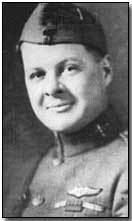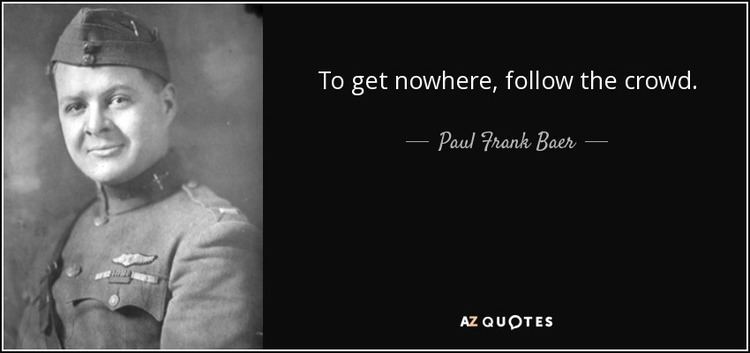Allegiance United States Name Paul Baer | Rank First lieutenant | |
 | ||
Awards American Distinguished Service Cross with Oak Leaf ClusterFrench Legion d'Honneur and Croix de Guerre Died December 9, 1930, Hong Kong Unit Escadrille SPA.124, United States Army Air Service, 103d Aero Squadron | ||
First Lieutenant Paul Frank Baer was the first flying ace in the history of American military aviation, credited with nine confirmed and seven unconfirmed aerial victories in World War I. He also scored the first aerial victory ever for an American military unit.
Contents

Early life and characteristics
Paul Frank Baer quit selling Cadillacs to join the military. He was described as short, sturdy, pink-cheeked, square-featured, with brown hair and blue eyes.
World War I service
Baer joined the Lafayette Flying Corps in 1917, being posted to Escadrille N.80 from August 1917 to January 1918. He transferred to the Lafayette Escadrille in January 1918 to transition into the 103rd Aero Squadron of the United States Army Air Service. He scored his first aerial victory for the 103rd, on 11 March 1918; it was the first triumph of an Air Service unit. (Lt. Stephen W. Thompson of the 1st Aero Squadron shot down an Albatros on 5 February 1918 while flying as a gunner with a French unit. Baer is second on the official chronological list.) Baer scored his fifth kill on 23 April 1918, making him the first Air Service ace.
He continued to score; on 22 May, he brought down his ninth victim to lead all American pilots. However, he was shot down during this victory, and fell into German hands. He would remain a prisoner of war until after the armistice. If his seven unconfirmed wins had been verified, he would have been one of the leading American aces.
Postwar
Baer continued to fly postwar. In late 1919, he became a member of the American Flying Club and tried to raise a squadron of fifteen American aviation combat veterans to form a "Pulaski Squadron" to support the Polish drive for independence. Baer foresaw his role as commanding the unit with the rank of major. He claimed to have Paderewski's support for his efforts. (The Polish Air Force did have the Polish 7th Air Escadrille aka "Kościuszko Squadron" of US volunteers.)
Baer went on to forge a career in civil aviation. By 1927, he was a Department of Commerce aeronautics inspector in San Antonio, Texas. He then spent about a year flying as a commercial pilot in South America.
Baer died in an aircraft accident in Shanghai on 9 December 1930. He was taking off in a floatplane with a Russian woman as his passenger. Baer's plane struck the mast of a junk on the Yangtze River and crashed. He was believed to have about 3,500 flight hours experience when he died. He is buried in Lindenwood Cemetery at Fort Wayne.
